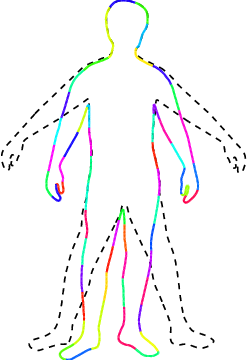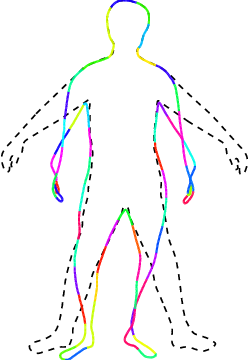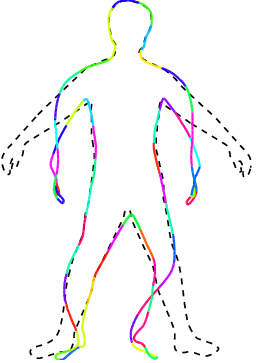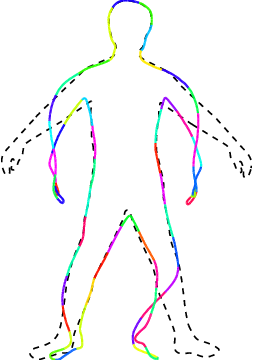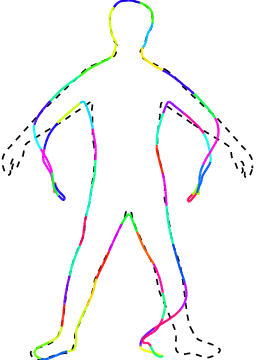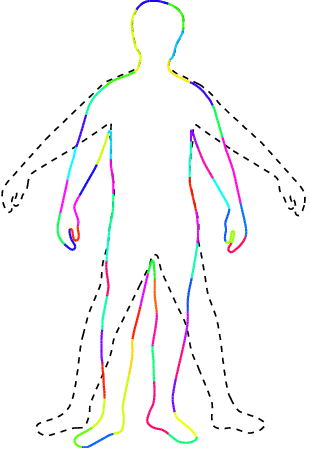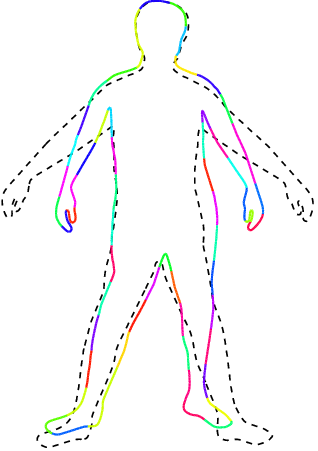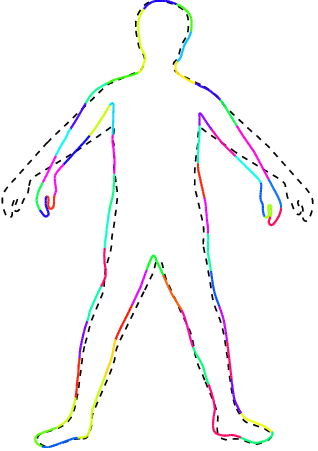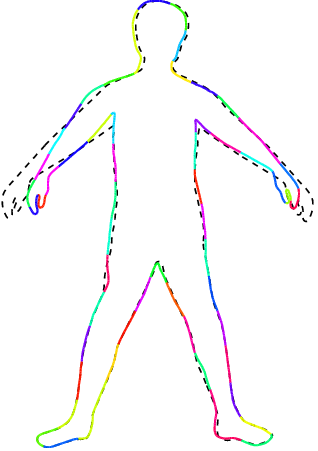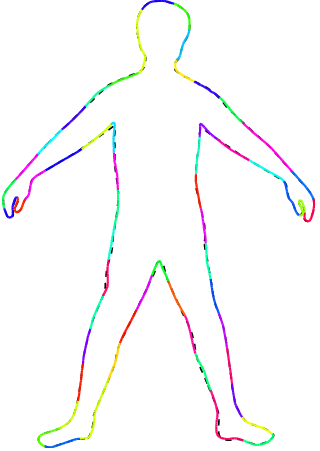Section: New Results
Articulating motion
Participant : Guillaume Charpiat.
keywords: shape evolution, metrics, gradient descent, Finsler gradient, Banach space, piecewise-rigidity, piecewise-similarity
This is joint work with Giacomo Nardi, Gabriel Peyré and François-Xavier Vialard (Ceremade, Paris-Dauphine University).
Context in optimization : A fact which is often ignored when optimizing a criterion with a gradient descent is that the gradient of a quantity depends on the metric chosen. In many domains, people choose by default the underlying metric, while it is not always relevant. Here we extend the set of metrics that can be considered, by building gradients for metrics that do not derive from inner products, with examples of metrics involving the norm, possibly of a derivative.
Mathematical foundations : This work introduces a novel steepest descent flow in Banach spaces. This extends previous works on generalized gradient descent, notably the work of Charpiat et al. [6] , to the setting of Finsler metrics. Such a generalized gradient allows one to take into account a prior on deformations (e.g., piecewise rigid) in order to favor some specific evolutions. We define a Finsler gradient descent method to minimize a functional defined on a Banach space and we prove a convergence theorem for such a method. In particular, we show that the use of non-Hilbertian norms on Banach spaces is useful to study non-convex optimization problems where the geometry of the space might play a crucial role to avoid poor local minima.
Application to shape evolution : We performed some applications to the curve matching problem. In particular, we characterized piecewise-rigid deformations on the space of curves and we studied several models to perform piecewise-rigid evolutions (see Figure 19 ). We also studied piecewise-similar evolutions. Piecewise-rigidity intuitively corresponds to articulated motions, while piecewise-similarity further allows the elastic stretching of each articulated part independently. One practical consequence of our work is that any deformation to be applied to a shape can be easily and optimally transformed into an articulated deformation with few articulations, the number and location of the articulations being not known in advance. Surprisingly, this problem is actually convex.
|
An article was submitted to the journal Interfaces and Free Boundaries [52] .


